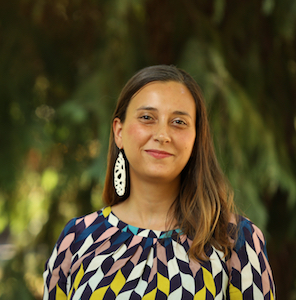Affiliation: University of Oregon

Alison Carter is Assistant Professor in the Department of Archaeology at the University of Oregon. She holds her degrees from the University of Wisconsion, Madison (M.S. and Ph.D.) and Oberlin College. Profssor Carter is an anthropological archaeologist with interests in the political economy and evolution of complex societies in Southeast Asia, the archaeology of East and South Asia, materials analysis and LA‐ICP‐MS (Laser Ablation Inductively Coupled Plasma Mass Spectrometry), craft technology and specialization, household archaeology, ritual and religion, trade and exchange, and bead studies.
What can archaeologists learn from studying small objects like beads? In Southeast Asia, glass and stone beads found in burials are amongst the earliest indicators of contact with South Asia starting in the late centuries BCE. While these beads appear to be visually similar to one another, careful study of their manufacturing methods and compositions show distinctions that have been associated with different trade networks. In this talk, I will review my study of glass and stone beads from sites in Cambodia and Thailand and discuss the trade networks that circulated different types of beads. I argue that particular kinds of beads are material indicators of the “Mekong Interaction Sphere” associated with the Funan civilization, a powerful trading polity in the Mekong Delta.
Short bibliography and/or website on lecture topic (for lay reader):
Carter, A. K. (2015). Beads, Exchange Networks and Emerging Complexity: A Case Study from Cambodia and Thailand (500 BCE – CE 500). Cambridge Archaeological Journal, 25(04), 733-757. doi:10.1017/s0959774315000207
Carter, A. K., Dussubieux, L., Stark, M. T., & Gilg, H. A. (2021). Angkor Borei and Protohistoric Trade Networks: A View from the Glass and Stone Bead Assemblage. Asian Perspectives, 60(1), 32-70. doi:https://doi.org/10.1353/asi.2020.0036
Ancient empires are defined by their expansive tendencies, but more than a century of work at Angkor has not examined how this well-defined center grew and created its provincial periphery. Studying change at the state’s edges – in provinces – offers insights on limits of state control and local agency in these regions. This lecture focuses on a provincial center, Prasat Baset, located 70km SW of the Angkorian capital. This region was incorporated into the Angkorian state in the 11th century CE through the construction of a sandstone temple (prasat), yet epigraphic evidence suggests complex and fluctuating relationships between this provincial zone and the capital through time. I review recent research by the Pteah Project (Project Excavating Ancient Households), which seeks to understand what impacts Angkorian imperial intervention had on the local Baset community and how this changed over time.
Short bibliography and/or website on lecture topic (for lay reader):
https://sites.google.com/view/pteah-cambodia/home
The Angkor civilization was the major regional power in Southeast Asia from the 9-15th centuries CE. However, despite more than a century of archaeological research within Angkor’s capital, little is known about the lives of non-elites. This presentation discusses recent research on Angkor’s population at two scales. First, I present recent work by the Greater Angkor Project that has focused on understanding Angkor’s residential occupation through the investigation of habitation mounds within Angkor’s temple enclosures. Then, I present new collaborative research on the diachronic demographic growth of Greater Angkor, including updated population estimates, which highlight Angkor’s place as one of the world’s largest preindustrial settlements.
Short bibliography and/or website on lecture topic (for lay reader):
https://theconversation.com/a-metropolis-arose-in-medieval-cambodia-new-research-shows-how-many-people-lived-in-the-angkor-empire-over-time-157573
https://www.academia.edu/38733206/The_Angkorian_city_From_Hariharalaya_to_Yashodharapura